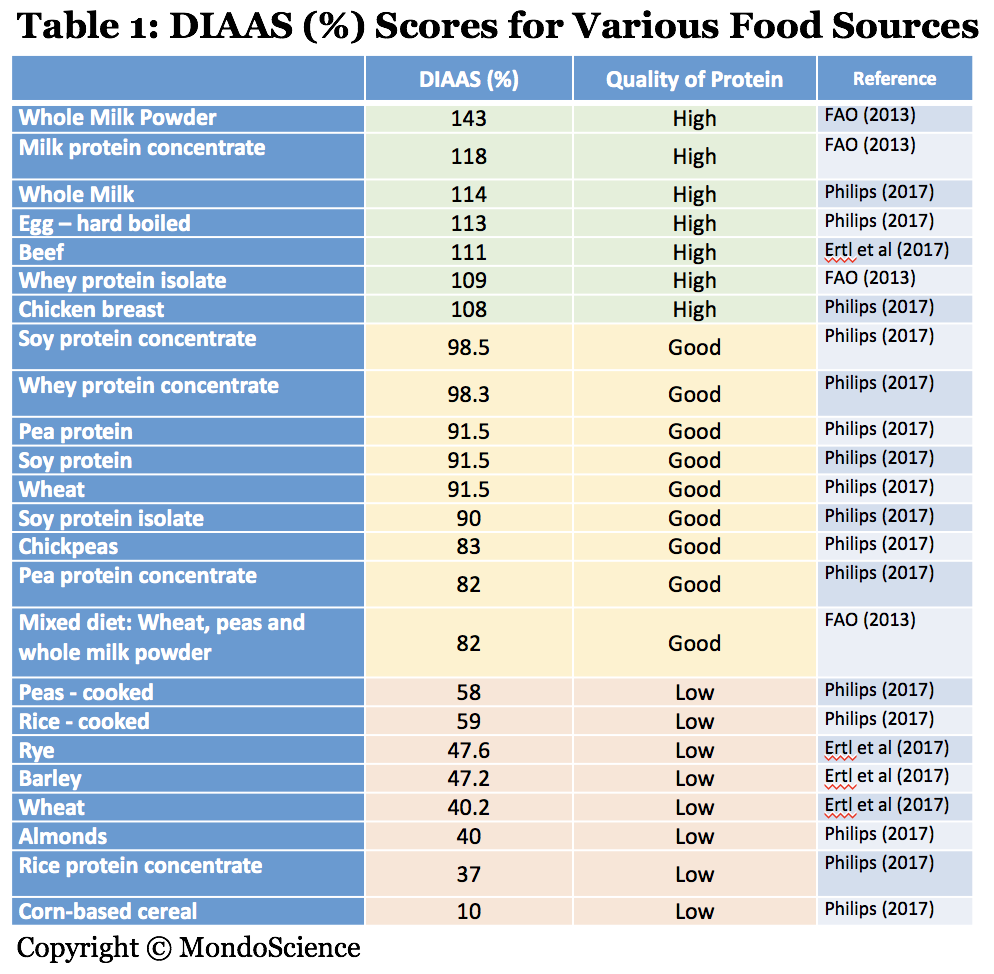100% Amino Acid Score
/Yes, there is a score for amino acids, and it can even go above 100%. But what does an Amino Acid Score actually represent?
Why do we need amino acids?
In case you don’t know what amino acids are, the previous post “What are Amino Acids?” will help. Briefly, amino acids are the building blocks of proteins, and all our proteins are made up of the same 20 basic amino acids, but the amount of each will vary from protein to protein.
Amino acids are also required to meet the essential metabolic needs and maintenance of nitrogen in our bodies. The amount needed of each amino acid will vary with respect to age; from normal growth of infants and children, to adults, and pregnancy and lactation in women.
Where do we get our amino acids from?
Proteins we take up in our diet provide us with amino acids, especially the essential amino acids that cannot be synthesised within our bodies (see “What are Amino Acids?”). This is very important as, unlike fat and glucose, our bodies do not store proteins. Any excess amino acids are degraded, with their nitrogen excreted as urea in the urine, and the remainder, a-ketoacids, used as a source of energy or converted into carbohydrates or fats. If more amino acids are needed, protein will be taken from the breakdown of muscle fibres.
Do all proteins have the same amount of amino acids?
No. Different protein food sources have different amounts of amino acids. During food processing and cooking, some of these amino acids are susceptible to damage, and so the amount of amino acids taken up by the body will vary.
What is the amino acid score?
In order to evaluate the quality of proteins taken in from our diet, the Food and Agriculture Organisation of the United Nations (FAO) and the World Health Organisation (WHO) developed an amino acid scoring system. This scoring system is called the Protein Digestibility Corrected Amino Acid Score (PDCAAS); though more recently they have recommended using the Digestible Indispensable Amino Acid Score (DIAAS) to better describe protein quality and overcome limitation of PDCAAS.
DIAAS is based on the true ileal (small intestine) digestibility values for each individual amino acid (Moughan et. al., 2012). It is a good reflection of the digestibility of proteins and amino acids in our diet with respect to the amounts of individual amino acids actually absorbed by the body. Scores can be greater than 100% if the particular protein contains a high amount of essential amino acids; note that PDCAAS sources are truncated at 100%.
With me so far?
What you really want to know is which protein food sources have the highest amino acid score, and which are not really very efficient in giving us the amino acids we need.
Table 1 below list some common protein food sources and their scores. Remember, the nutritional value of each protein will depend on their amino acid composition and its digestibility.
It is clear from Table 1 that some protein sources have a higher amino acid score, and so are high quality sources of protein. Dairy products are a particularly good and efficient source of protein. Keep in mind that it is more important to get a good balance of amino acids throughout the day by eating a varied diet, rather than necessarily ensuring all the amino acids are in every meal.
For those of you that are vegan, consuming a more varied diet of plants and legumes can help to ensure you are getting enough protein, especially if the protein quality source is low, i.e. less digestible. One way I use to help ensure I get all the amino acids I need is via Arbonne’s Protein Shake. This shake has a 100% Amino Acid Score. It is packed with 20 grams of natural vegan protein, 24 essential vitamins and minerals, keeps me satisfied until my next meal, and helps me maintain a healthy balanced diet.
A healthy balanced diet also requires fats. Learn more about fats in The Good, The Bad and The Essential.
References:
Ertl, P., Knaus, W., Sollitsh, W. (2016) An approach to including protein quality when assessing the net contribution of livestock to human food supply. Animal. 10: 11, pp 1883-1889
FAO (2013) Dietary Protein Quality Evaluation in Human Nutrition. FAO Food and Nutrition Paper 92. Link: http://www.fao.org/ag/humannutrition/35978-02317b979a686a57aa4593304ffc17f06.pdf
Moughan, P.J., Gilani, S., Rutherfurd, S.M., Tome, D. (2012) True ileal amino acid digestibility coefficients for application in the calculation of Digestible Indispensable Amino Acid Score (DIAAS) in human nutrition. Report of a Sub-Committee of the 2011 FAO Consultation on “Protein Quality Evaluation in Human Nutrition” Link: http://www.fao.org/ag/humannutrition/36216-04a2f02ec02eafd4f457dd2c9851b4c45.pdf
Moughan, P.J., Butts, C.A., Wijk, Hv., Rowan, A.M., Reynolds, G.W. (2005) An Acute Ileal Amino Acid Digestibility Assay Is a Valid Procedure for Use in Human Ileostomates. J Nut. 135: 3, pp 404-409
Philips, S.M. (2017) Current Concepts and Unresolved Questions in Dietary Protein Requirements and Supplements in Adults. Front Nutr. 4: 13, pp 404-409
If you enjoyed reading this, please like, share or leave a comment.




